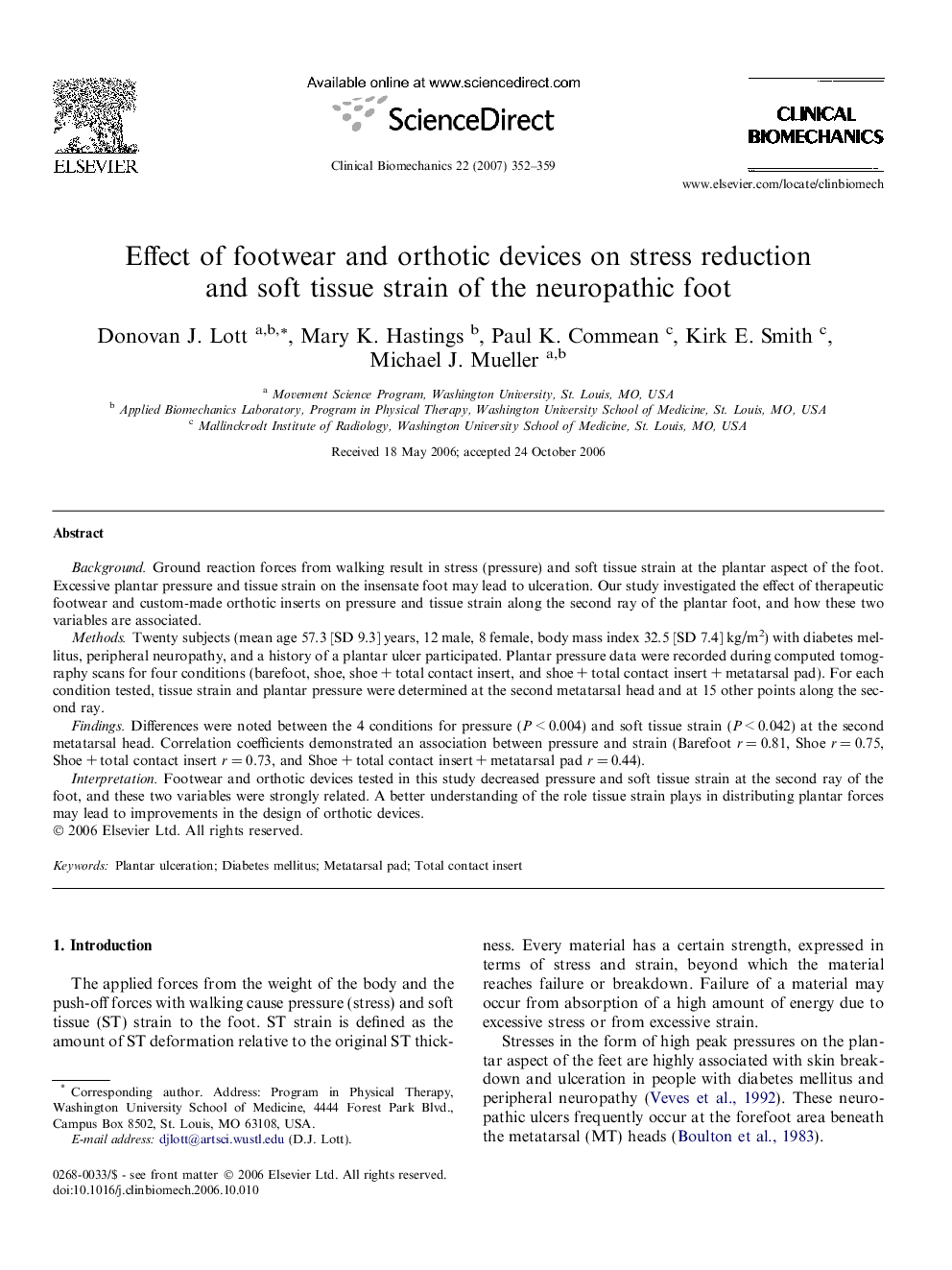| Article ID | Journal | Published Year | Pages | File Type |
|---|---|---|---|---|
| 4051710 | Clinical Biomechanics | 2007 | 8 Pages |
BackgroundGround reaction forces from walking result in stress (pressure) and soft tissue strain at the plantar aspect of the foot. Excessive plantar pressure and tissue strain on the insensate foot may lead to ulceration. Our study investigated the effect of therapeutic footwear and custom-made orthotic inserts on pressure and tissue strain along the second ray of the plantar foot, and how these two variables are associated.MethodsTwenty subjects (mean age 57.3 [SD 9.3] years, 12 male, 8 female, body mass index 32.5 [SD 7.4] kg/m2) with diabetes mellitus, peripheral neuropathy, and a history of a plantar ulcer participated. Plantar pressure data were recorded during computed tomography scans for four conditions (barefoot, shoe, shoe + total contact insert, and shoe + total contact insert + metatarsal pad). For each condition tested, tissue strain and plantar pressure were determined at the second metatarsal head and at 15 other points along the second ray.FindingsDifferences were noted between the 4 conditions for pressure (P < 0.004) and soft tissue strain (P < 0.042) at the second metatarsal head. Correlation coefficients demonstrated an association between pressure and strain (Barefoot r = 0.81, Shoe r = 0.75, Shoe + total contact insert r = 0.73, and Shoe + total contact insert + metatarsal pad r = 0.44).InterpretationFootwear and orthotic devices tested in this study decreased pressure and soft tissue strain at the second ray of the foot, and these two variables were strongly related. A better understanding of the role tissue strain plays in distributing plantar forces may lead to improvements in the design of orthotic devices.
